Table of contents
When we talk about raw chia seeds , we usually mean the seeds of the Mexican chia ( Salvia hispanica ). Chia seeds ( chia seeds ) can be used in a similar way to flax seeds and have some similar properties.
Using chia seeds in the kitchen:
How do you prepare chia seeds? Raw chia seeds are becoming increasingly popular in modern cuisine thanks to their wide range of uses. As a topping, they add a crunchy bite to soups, salads or desserts, and they are a welcome change in breads and biscuits. Raw chia seeds have been tried and tested as an ingredient in smoothies, muesli or ice cream. When germinated, you get (salad) sprouts, and when ground into flour, they are a nutrient-rich baking ingredient.
The most well-known form of use, however, is chia gel, which is also known as chia pudding. Raw chia seeds swell up many times in liquid and form a gelatinous mass that can be used in many different ways. Soaking chia seeds: The ratio can increase up to tenfold. In practice, you need at least six times the amount of liquid, e.g. water, to soak chia seeds.
Chia seeds soaked raw in plant drinks (e.g. oat or rice drinks ) make a delicious breakfast or dessert as chia pudding. When baking, the gel can replace up to 50 percent of the fat and as a binding agent it is a vegan egg substitute. Chia seeds can also be used for a healthy jam alternative, which makes gelatine unnecessary.
Chia seeds are a component of the gluten-free and raw vegan Erb-Müesli . In addition to citrus fruits (rich in vitamin C) and berries (rich in antioxidants), it also contains pseudocereals, various seeds and golden millet. Also try the Erb-Müesli plus oat flakes variant - unless you want to eat pure raw food, because the oats sold as food are very rarely raw, but at least dried.
In pre-Hispanic times, Indians ground roasted chia seeds into a flour called chianpinolli and used it, together with corn flour, to make tortillas, tzoalli (tamales) and various drinks (chianatolli). Still known today as "agua de chia" or "chia fresca" (also iskiate) are soft drinks made from chia seeds, lemon and sugar or fruit juice. 1
Vegan recipe for chia pudding with coconut milk and mango:
The night before, season 200 ml of coconut milk with agave syrup and ground vanilla. Stir in 2 tablespoons of raw chia seeds and leave to swell in the fridge overnight. The next morning, puree a ripe mango and layer it with the chia pudding in a glass. You can also use raspberries or blueberries instead of the mango.
Vegan recipe for chia strawberry jam:
For the raw version, puree 200 g of strawberries and add the juice of half a lemon. Sweeten with a little agave syrup. Now add 2 tablespoons of raw chia seeds (organic?) and mix everything thoroughly. The jam needs to be left in the fridge overnight to thicken and will keep for about 2 days. If you cook the fruit before adding the chia, the shelf life will be extended by about a week.
Vegan recipes with chia (raw chia seeds) can be found under the note: " Recipes that have the most of this ingredient ".
| Not only vegans or vegetarians should read this: Vegans often eat unhealthily. Avoidable nutritional mistakes . |
Shopping - where to buy chia seeds?
Sales (raw chia seeds): In Europe, chia seeds have been approved as food since 2009 and less restricted since 2013. 12 Raw chia seeds can now be bought in health food stores, organic shops and drugstores, but also in all large supermarkets such as Coop , Migros , Rewe , Edeka and Hofer , as well as in organic supermarkets such as Alnatura or Denns . Even the discounters Aldi , Lidl and Denner have included raw chia seeds in their permanent range. If you want to be sure that you are buying raw food quality, look for information on the packaging that guarantees gentle drying. Our recommendation: Buy organic and raw chia seeds if possible! We now buy packages labelled "Chia (chia seeds), raw, organic" in practically all larger supermarkets.
Chia seed cultivation: Due to the different countries where they are grown and their long shelf life, chia seeds are in season for us all year round .
There are black, black-spotted, white and grey chia seeds (raw), but they hardly differ in taste and nutrient composition. Black chia seeds (raw) are more common and are therefore cheaper. Brownish tones can be an indication of poor quality. In Germany, a kilogram of dried chia seeds (raw) costs between 10 and 40 euros.
Chia cultivation (organic): The basic argument for organically grown chia seeds is that they do not contain chemical fertilizers or pesticides. However, Öko-Test experts found residues of toxic weed killers in organic chia seeds that exceeded the legal maximum residue levels. 3 This shows that even controlled organic quality from third world countries is not always perfect. As a cheaper and more ecological alternative, local linseed (golden linseed, flax) is recommended, which has certain similar properties (mucous-forming, strong swelling, stool-regulating) and comparable ingredients (high content of omega-3 fatty acids).
Chia seeds and chia oil are newly approved foods in Europe (novel food). Up to 10% chia seeds are now permitted as an ingredient in bread, baked goods, breakfast cereals and nut mixes, and up to 1.3% in yoghurt. The seeds can also be added to fruit juices and fruit juice mixes. As long-term studies on the health effects are still pending, retailers are not allowed to advertise with health-related claims. However, references to the high fiber content of the seeds are legal, as the seeds contain more than 6 g/100g of fiber (even 34 g!). Chia seeds must be labeled on packaging as "chia seeds ( Salvia hispanica )" and may only be sold to the end consumer pre-packaged. 2,4
In addition, every chia seed package contains a warning that you should not consume more than 15 grams per day. According to the EFSA (European Food Safety Authority), this advice is intended to protect consumers. 2 This recommendation is mainly based on the lack of long-term studies and not on any harmful properties.
Chia seeds: found in the wild
Mexican chia, also known as Spanish sage, can be found in Mexico and further south to Peru. This type of sage has now become naturalized in many regions, e.g. in the Caribbean. Salvia hispanica is not winter hardy and requires minimum temperatures of +5 °C. The upright, branched, annual plant reaches heights of 60-90 cm and a circumference of 30-45 cm. Its pointed, egg-shaped leaves are bright green and up to 8 cm long. The pale blue flowers bloom in summer in dense clusters up to 15 cm long. 9 The four-part achenes (broken fruit) divide into very small seeds, approx. 2 mm long and 1.25 mm wide. 1
Storing chia seeds: Storage
Chia seeds (raw) have a long shelf life. If you store raw chia seeds in screw-top jars or tins, they can be stored for several years if they are protected from light and are airtight and dry. 2 Chia seeds are ideally stored at room temperature - in the fridge, the high humidity would cause them to spoil quickly. Shelf life of chia pudding: Chia pudding stays fresh in the fridge for 4 to 5 days.
Ingredients of chia seeds - nutritional value - calories:
Chia seeds (raw) have a very high content of omega-3 fatty acids (alpha-linolenic acid, ALA) at 18g/100g, while at the same time they contain a small amount of omega-6 fatty acids (linoleic acid, LA) . 10g of chia seeds cover 89% of a woman's daily requirement of omega-3 fatty acids, based on an energy requirement of 2,000 kcal. This means that around 12g of chia seeds are sufficient for the daily supply of omega-3 fatty acids. In comparison, linseeds contain the highest concentration of omega-3 fatty acids of all plant-based foods at 23g/100g. 5 In order to benefit from the polyunsaturated fatty acids, the seeds should be freshly ground before consumption. By soaking them briefly after grinding, e.g. in lemon water, other nutrients are also released more quickly.
The health-promoting ratio of omega-6 fatty acids to omega-3 fatty acids in chia seeds is very positive at 1:3.
According to the Federal Office of Public Health ( FOPH ), we should not exceed the average ratio of omega-6 (linoleic acid) to omega-3 fatty acids of 5:1. In chia seeds, this ratio is even the other way round, 1:3, which is 15 times better. This makes chia seeds very helpful in reducing the average intake to 5:1 or better. Only flax seeds are even better (in a ratio of 1:4). Many other seeds and nuts show the opposite ratio - e.g. 130:1 (cashew nuts) or even 180:1 (pumpkin seeds). 5
Chia seeds are therefore an excellent source of omega-3 fatty acids, from which a healthy body can usually produce sufficient anti-inflammatory eicosapentaenoic acid (EPA) and docosahexaenoic acid (DHA) , at least with a low intake of omega-6 fatty acids. 6
The protein content in chia seeds is relatively high for a pseudocereal at 17 g/100 g, although the seeds have a fairly balanced amino acid pattern. Lysine is considered the limiting amino acid in chia seeds (0.97 g = 52% of the daily requirement), while tryptophan is far higher than the other amino acids at 0.44 g (= 176% of the daily requirement). 5
Chia seeds are rich in fiber and contain 34 g/100g, which is even more fiber than flax seeds (27 g/100g), legumes and many other seeds. 5
The trace element selenium is worth noting, as it is only present in small amounts in European soils and thus in most plant-based foods. 10 g of chia seeds provide 5.5 µg of selenium and cover around 10% of an adult's daily requirement. Durum wheat from the USA contains slightly more selenium. According to the USDA (US Department of Agriculture), 100 g of this wheat meets the daily selenium requirement. A much higher selenium content can be found in Brazil nuts . A nut weighing around 4 g provides 76.68 µg of selenium and thus 139% of the daily requirement. 5 Important information on eating Brazil nuts and the dangers of an overdose of selenium can be found in the article "Daily selenium requirement (selenium): Brazil nut" .
Chia seeds also contain secondary plant substances such as phenolic acids (caffeic acid) and antioxidant flavonols (myricetin, quercetin, kaempferol) from the group of flavonoids. 4
The vitamins in chia seeds are rather underrepresented compared to the essential fatty acids, proteins, minerals and trace elements they contain. Detailed information on the nutritional values of chia seeds can be found in the tables below.
The term superfood is often used in connection with chia seeds. However, this term is primarily used for marketing purposes and is no guarantee that the food is particularly healthy.
You can find all the ingredients of Chia, how much it covers your daily needs and comparison values with other ingredients in our nutrient tables below the ingredient image.
Chia seeds: Health aspects - effects
Scientific research into the effects of chia seeds on cardiovascular diseases, high blood pressure, obesity, diabetes and cancer is in its early stages. The studies do not yet allow any definitive statements to be made. However, smaller clinical studies show that chia seeds can lower blood pressure in some patients with high blood pressure. A reduction in the risk of cardiovascular diseases was observed in type II diabetics. 2
Are chia seeds good for digestion? Thanks to their fiber and swelling properties, chia seeds increase stool volume and speed up intestinal transit time. With sufficient fluid intake, chia seeds can prevent (or relieve) constipation and help you feel full for longer. Clinical studies have not yet been able to confirm whether chia seeds help you lose weight. 2
Chia seeds are suitable as a dietary food for people with celiac disease (sprue, gluten-sensitive enteropathy). Look for the gluten-free symbol (crossed-out ear of corn), which only licensed products are allowed to carry. This way you can avoid contamination with foods containing gluten.
The antioxidant-effective secondary plant substances in chia seeds can capture free radicals in the body and thus protect the cells from damage. 2
Chia: Dangers - Intolerances - Side effects
Can chia seeds be harmful? Every food and every food has positive and negative effects. There is uncertainty about the allergy potential of chia seeds. 7 Allergic people in particular should be careful when eating chia seeds, as allergic reactions can occur. 2
Are chia seeds unhealthy? As long as long-term studies are lacking, according to the current state of science, a daily consumption of 15 g of chia seeds is considered safe for health. In the USA, the authorities recommend a maximum consumption of 48 g per day. 8
You often read that chia seeds or flax seeds can cause constipation if you don't drink plenty of fluids when you eat them. However, no one consumes enough dry chia or flax seeds to cause serious problems. If you are not used to a high-fiber diet, start with small amounts so as not to overwhelm your digestion. And make sure you drink enough water - for the general well-being of your body.
Do chia seeds cause side effects? The ingredients in chia seeds can interact with blood-thinning medications in the body. The seeds also have blood-thinning properties. Chia seeds should not be eaten before an operation. People with low blood pressure should know that chia seeds can lower blood pressure. If you have blood clotting disorders or are taking blood-thinning medications, you should discuss the consumption of chia seeds with your doctor. 8 Thinning the blood with chia seeds can be an effective way to replace blood thinners.
When consuming chia oil in capsule form, you should follow the recommended dosage on the packaging. Scientists estimate that 2 g of chia oil per day is safe for health. 2
Folk medicine - naturopathy:
Ethnobotanical evaluations of sources from the 16th and later centuries indicate that chia was mainly used for medicinal purposes. Chia seeds and occasionally other parts of the plant were used in recipes to treat vaguely described ailments. According to Wikipedia, these ailments cannot be assigned to a modern diagnosis. 1
Occurrence - Origin:
Mexican chia originally came from southern Mexico to Ecuador and was an important agricultural product in pre-Hispanic times. The seeds were already cultivated by the Aztecs , Teotihuacán and Toltecs as a locally important staple food. After the conquest of the Aztec Empire by the Spanish, the cultivation of chia quickly collapsed. 1
It was only when 52-year-old Tarahumara Indian Cirildo Chacarito won a 100-mile race in the USA that chia seeds came back into the spotlight. The publication of Christopher McDougall 's book "Born to Run" finally sparked the chia boom. 1
Chia seeds: Growing in the garden
Chia seeds can be sown from May onwards - in loose soil and in a sunny location. As the plant grows tall and wide, you should keep a large distance between the chia seeds or seedlings. The plants rarely need a little fertilizer, but they need soil that is as consistently moist as possible without waterlogging. The chia plants bloom in September - and around 45 days later you can cut off the top part of the plants and shake out the ripe seeds.
Growing chia plants - harvest:
When growing chia plants, you need well-drained, well-ventilated, nitrogen-rich, nutrient-rich and not too salty soil that is sandy, sandy-loamy but not too wet. A sheltered, sunny and frost-free location is ideal for plants growing in tropical to subtropical regions. Temperatures between 16 and 26 °C are optimal for the drought-resistant plants. Chia can be grown well at altitudes between 400 and 2,500 m. The plants produce an average yield of around 1,000-1,500 kg/ha. The seeds are ready for harvest 120-180 days after sowing. 1
Chia is now cultivated not only in central Mexico and Guatemala, but also in countries in South America, the south of the USA, Australia and parts of Africa, e.g. Kenya. Chia can only be grown in regions without excessive rainfall, as the plants otherwise tend to rot. 1 Since 2015, scientists at the University of Hohenheim (Stuttgart) have been trying to plant the cold-sensitive plant in central European regions and to select local varieties in South America. The motto of Prof. Dr. Simone Graeff-Hönninger - Yacon, Chia & Quinoa: "Bringing regional superfood to German fields".
Animal protection - species protection - animal welfare:
The flowers of the various sage species produce plenty of nectar and are important as bee pasture. 9 As a blue-flowering sage species, chia flowers are usually pollinated by bees or bumblebees. 10
General information:
The Mexican chia ( Salvia hispanica ) belongs to the genus sage ( Salvia ) within the mint family ( Lamiaceae ). Originally, this type of sage was found almost exclusively in Mexico and Central America. The seeds of the plant are pseudocereal seeds. 1
In contrast to Mexican chia, Californian chia ( Salvia columbariae ) is found in the south-west of North America, where it was used as a staple food by North American natives. 11
The genus sage ( Salvia ) includes about 900 different species of mainly evergreen shrubs and subshrubs. Sage grows worldwide in temperate, subtropical and dry tropical zones. 9
What does chia mean? The word chia comes from the Nahuatl language (chian) and means something like oily. The term chia can also be used for other types with similar seeds. 11
Alternative names for chia seeds:
Alternative names or alternative spellings for chia seeds ( Salvia hispanica ) are chia seeds, Mexican chia, chia sage or simply chia.
In English the name is chia, chia seed or chia seeds.
Keywords for the use of chia seeds:
cosmetics, art, varnish, body painting, chicken feed. 1
Literature - Sources:
Bibliography - 12 Sources
| 1. | wikipedia.org Mexikanische Chia. |
| 2. | bzfe.de (Bundeszentrum für Ernährung). Chiasamen. |
| 3. | ernaehrungs-umschau.de Öko-Test: Pestizide und Blei in Superfood. |
| 4. | bzfe.de (Bundeszentrum für Ernährung). Chiasamen nun auch in Joghurt zulässig. Ernährung im Fokus. 5-6/2018. PDF. |
| 5. | USDA (Landwirtschaftsministerium der USA) Nährstofftabellen. Chiasamen. Leinsamen. |
| 6. | Biesalski, Hans Konrad; Grimm, Peter; Nowitzki-Grimm, Susanne. Taschenatlas Ernährung. 6. Auflage. Stuttgart; 2015. Georg Thieme Verlag. |
| 7. | efsa.europa.eu (Europäische Behörde für Lebensmittelsicherheit). Opinion on the safety of 'Chia seeds (Salvia hispanica L.) and ground whole Chia seeds' as a food ingredient. Scientific |
| 8. | Opinion of the Panel on Dietetic Products, Nutrition and Allergies. PDF. |
| 9. | apotheken-umschau.de Chia-Samen - Wirklich ein Superfood? |
| 10. | Bown, D. Kräuter. Die grosse Enzyklopädie. Anbau und Verwendung. 2. Auflage. München; 2015. Dorling Kindersly.5. wikipedia.org Kalifornische Chia. |
| 11. | wikipedia.org Salbei. |
| 12. | wikipedia.org Kalifornische Chia. |

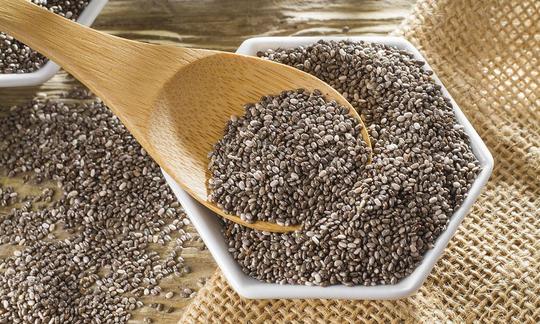

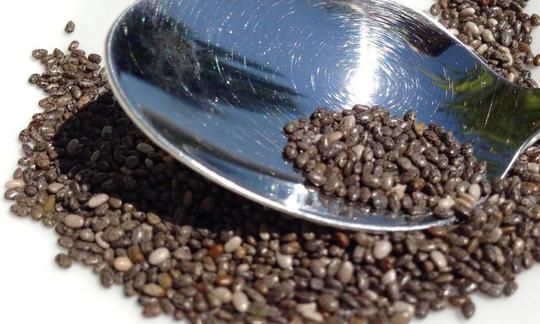

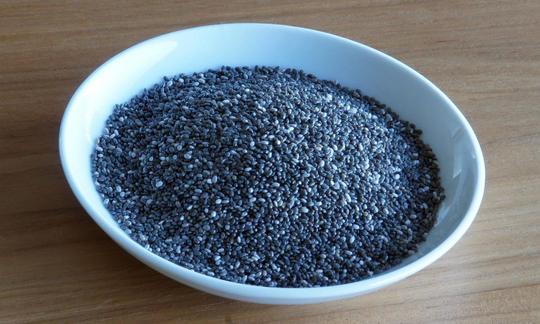

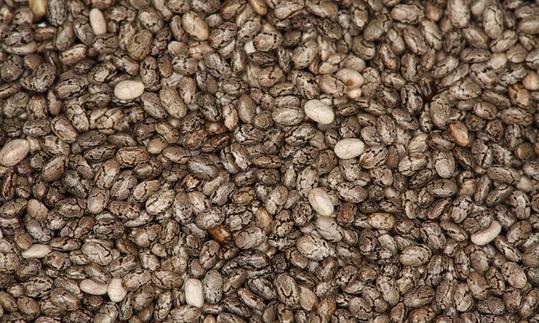

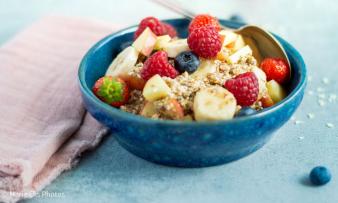
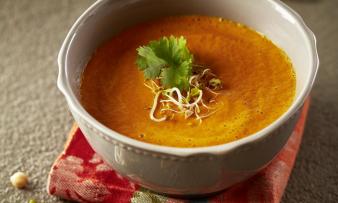
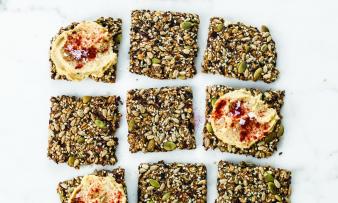
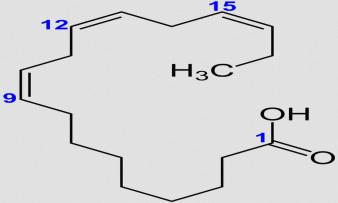




Comments